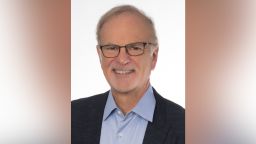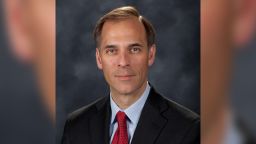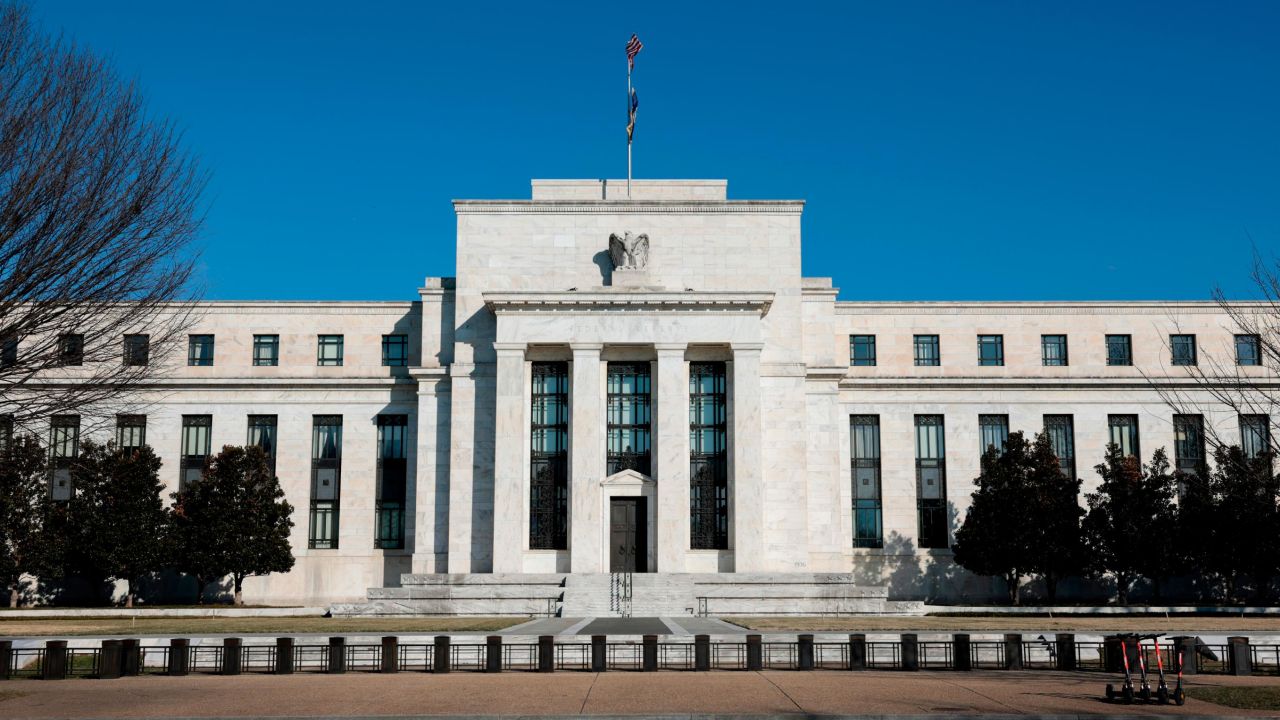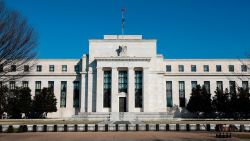Editor’s Note: This roundup is part of the CNN Opinion series “America’s Future Start Now,” in which people share how they have been affected by the biggest issues facing the nation and experts offer their proposed solutions. The views expressed in these commentaries are the authors’ own. Read more opinion at CNN.
Reader Linda Stewart spoke for many Americans when she wrote that after her recent retirement, “money was getting uncomfortably tight. Soon I was in the red each month, just trying to keep up.” She stopped driving as much, turned her furnace down in the winter and cooked more meals at home.
Inflation in the United States has reached levels not seen in 40 years. The Consumer Price Index remained stubbornly high in August at 8.3% year-over-year. We asked experts to share their views about what to expect with the US economy moving forward, what solutions they’d propose to help lower inflation – and how they think the federal government can help Americans deal with higher prices.
Heidi Shierholz: Raise the minimum wage

Some economists are claiming that in order to curb inflation, the Federal Reserve must engineer an extended period of elevated unemployment – throwing millions out of work so that consumption drops and wage growth slows.
The impact of that would be terrible. High inflation is causing great hardship, but a recession would be far worse. Elevated unemployment churns out misery, lost opportunities and inequality. In light of these consequences, it would seem absurd to call for an extended period of elevated unemployment in the name of curbing inflation if it is likely to come down on its own. But that is exactly what is happening.
Growth in the price of food is slowing, and the price of energy has recently been dropping. Wages grew 4.8% at an annualized rate over the last three months, down from 6.1% at the end of 2021. Supply chain pressures – which have been a key driver of inflation – are easing. And consumer spending patterns are now normalizing – which is important because pandemic spending patterns had been a key driver of inflation as consumers shifted their spending from services to goods.
To help people hardest hit by today’s high inflation, the government should raise the minimum wage. In the last two years alone, the federal minimum wage’s purchasing power has dropped 12.2% – a massive hit to the living standards of working people. Raising the federal minimum wage to $15 over the next few years would be an important step toward a more equitable recovery, and it would contribute virtually nothing to inflation.
Thankfully, a return to more normal inflation appears likely to happen on its own. The costs of a Fed-engineered period of elevated unemployment would be far greater than any benefit that would come from reducing inflation somewhat faster than what is already occurring.
Heidi Shierholz is the president of the Economic Policy Institute and the former chief economist at the US Department of Labor during the Obama administration.
Dana M. Peterson: Tap into our emergency reserves

Overall inflation pressures may have peaked, but relentless price increases at grocery stores and restaurants may not let up anytime soon, and that is hurting millions of Americans.
Disruptions in the production and shipping of grains and cooking oils due to the war in Ukraine continue to bloat the cost of food globally. Additionally, a series of bad weather events is destroying harvests across the world, further stoking the price of food. In the US, both droughts and excessive rainfall have reduced forecasts for wheat harvests for next year, and the price of rice – an alternative for wheat – has consequently risen since the beginning of this year.
As a result, US households will likely continue to face higher prices for food well into 2023, especially as the war in Ukraine persists and as bad weather events have ruined crops for next year. This will only increase food insecurity for millions of Americans.
What can policymakers do to mitigate these high food prices?
The Federal Emergency Management Agency could be deployed to give out food from emergency reserves and social safety net programs, like the Supplemental Nutrition Assistance Program, could be expanded. Additionally, the federal government can make sure that school food programs, which provide nutrition to millions of children, remain fully funded.
Unfortunately, however, because so many of the factors driving this inflation are beyond elected officials’ control – war and natural disasters – their options are far from panaceas. The bottom line is that Americans will largely have to ride out this inflationary spell of sky-high prices at the grocery store until global food supplies normalize.
Dana M. Peterson is an executive vice president and chief economist at The Conference Board.
Mark Wolfe: Step up to the high energy bill plate

Home energy costs are reaching levels we haven’t seen in more than a decade. At current prices, we estimate that the cost of heating will increase by 17%, from $1,025 last winter to an estimated $1,202 this winter. And these price increases come on top of rising prices for other essentials like food and housing. This will greatly exacerbate the economic divide in this nation, as those with the least discretionary income will be hit hardest.
The federal government currently offers payment assistance for lower-income families through the Low Income Home Energy Assistance Program (LIHEAP) as well as the Weatherization Assistance Program (WAP), which helps families increase the efficiency of their homes. But funding is limited and will not be sufficient to help all lower-income families pay the high cost of home heating this winter. In fact, LIHEAP recently sent a letter to Congress asking for an additional appropriation of $5 billion to help families pay not only the high cost of home energy, but outstanding arrearages from last year’s high cost of home heating and cooling.
Longer term, the federal government needs to move quickly to implement programs included in the recently passed Inflation Reduction Act, such as helping lower-income families retrofit their homes by paying for electric heat pumps and other energy-efficient appliances to reduce their heating and cooling bills. But these funds will not be sufficient to help retrofit the nation’s entire lower-income housing stock, so they should be viewed as an important first step rather than an end point in transitioning to a clean energy economy. The federal government should build on these programs by providing long-term funding to retrofit the nation’s entire low-income stock so that all families can benefit from lower energy costs.
And what can families do? There are practical measures we can all take to save energy and lower our utility bills, including tuning up our heating and cooling systems, caulking leaks and reducing consumption when possible. It’s also important to check with local utilities and state energy agencies, as many offer subsidies to help families increase their homes’ energy efficiency.
Mark Wolfe is an energy economist and serves as the executive director of the National Energy Assistance Directors Association (NEADA), representing the state directors of the Low Income Home Energy Assistance Program and the Energy Programs Consortium. He specializes in energy, climate, housing and related consumer finance issues.
Jung Hyun Choi: Provide Millennials with more home ownership opportunities

In 2020, Millennials – who have substantially lower home ownership rates and are more likely to live with their parents than previous generations – were finally starting to make progress toward buying their first homes. But the prospect of Millennials catching up with the home ownership rates of earlier generations is now looking grim, as the rise in rents, home prices and mortgage rates are making the chance of home ownership increasingly out of reach.
This means many Millennials will either remain renters or delay forming independent households. And rising rent costs make it even harder for renters to save for future down payments. Home ownership is a primary source of building wealth, and those who buy their first home earlier have significantly higher housing wealth near retirement age. That means today’s housing market challenges could exacerbate wealth inequality across generations, as well as between Millennials who had the resources to buy a home when mortgage rates were low and those who didn’t.
The lack of supply is a key driver of rising housing costs, and it requires long-term fixes. But policymakers do have shorter-term levers available to expand access to first-time home ownership, such as improving the efficiency of government-insured mortgages; expanding the use of alternative data in mortgage underwriting, like rental payments; and designing and implementing a well-targeted down payment program. The Biden administration’s plan to forgive student loan debt could also help Millennials access mortgage credit by lowering their debt-to-income ratio and boosting their credit scores. These strategies can promote housing equity by creating opportunities for more Americans to experience the benefits of home ownership.
Jung Hyun Choi is a senior research associate in the Urban Institute’s Housing Finance Policy Center. She studies urban inequality, focusing on housing, urban economics, real estate finance and disadvantaged populations in the housing market.
Joseph Antos: Pay for health care that actually works

American families are facing sharply higher costs for everything, including health care. In the first half of the year, one in four Americans delayed or skipped medical care or medicine because of rising health care costs, according to a recent survey from Gallup and West Health. Regardless of party affiliation, most survey respondents had no confidence that Congress will act to lower health costs in the near future.
Thankfully, there are ways to reduce future health care costs while maintaining, and ideally improving, value to patients. Here’s how:
Simplify price-posting: The federal government now requires hospitals and insurers to make price information for health services available so that consumers can shop around for the best deal. Because the price varies depending on the consumer’s insurance coverage, which providers deliver the care and the clinical details of the service, it is difficult for insurers or hospitals to give accurate price estimates. To ensure that consumers are getting the best price, the federal government should establish new rules to simplify and standardize the prices for common services, such as joint replacements, or other high-cost elective procedures.
Pay for what works: Much of the care Americans receive is paid on a fee-for-service basis. That rewards providers for more services, not better health outcomes. Paying a fixed monthly amount to cover all services would shift the focus from more care to more effective care. And that would, in turn, reduce costs since consumers would be avoiding unnecessary treatments and, in many cases, reducing the need for more expensive care in future years.
Lower regulatory barriers: Federal and state regulations have impeded the adoption of more efficient health care. The latest example: Medicare rules restricting the use of telemedicine. Those rules were eased temporarily during the Covid-19 pandemic, allowing patients to access care more easily and allowing physicians to see more patients. That access will be curtailed if the public health emergency is lifted, which would create additional barriers to health services for many seniors. If Congress acts to resolve this, millions of Medicare beneficiaries will still receive timely care, potentially avoiding the need for more expensive treatment later on.
There are no quick fixes for high health costs, but these policies are the building blocks for more effective and more affordable health care for all Americans.
Joseph Antos is the Wilson H. Taylor scholar in health care and retirement policy at the American Enterprise Institute.
Arpit Gupta: Lower home builders’ costs

The housing market has seen an unsustainable runup during the pandemic period, with prices rising 44% between February 2020 and July of 2022. Rising mortgage rates and the Federal Reserve’s interest rate hikes will dampen housing demand in the months ahead. However, a lack of supply remains a big problem, due to challenges in zoning, permitting and supply chains.
Addressing these supply constraints is fundamental to solving the housing shortage. And while the patchwork of state and local construction regulations limits what the federal government can do, there are two ways it can try to boost housing supply.
First, the federal government can eliminate duties on imported Canadian lumber from 8.59% to zero. Elevated lumber prices added substantially to housing costs last year, increasing home prices for American consumers. While the price of lumber has fallen in recent months, home builders’ construction costs still remain high. Because the US imports approximately 25% of its lumber needs from Canada, eliminating lumber duties would help to lower construction costs, and therefore home prices.
Second, the federal government needs to make it easier for builders to use factory production methods, such as modular and panelized homes. These homes are prefabricated in a factory location and transported on site, and have one-third to one-half of the cost of more traditional construction methods. The share of such homes in construction has fallen, largely due to regulations and the limited government financing of such homes. Boosting this market would reduce construction costs, and therefore lower housing costs for Americans.
Arpit Gupta is an adjunct fellow with the Manhattan Institute and an assistant professor of finance at New York University’s Stern School of Business, where his research focuses on using administrative datasets to understand risk and return dynamics in alternative asset categories.
Mark Zandi: Raise interest rates to cool the job market

The worst of the painfully high inflation that has been plaguing the US economy for more than a year is behind us. And with a bit of luck and some reasonably good policymaking by the Federal Reserve, inflation will be meaningfully lower by this time next year.
By luck, that means the pandemic must continue to wind down. There will be future waves of Covid, but if inflation is to ease, each wave must be less disruptive to global supply chains and labor markets than the previous one. This seems likely, but it will still remain a threat, given China’s willingness to shut its economy down with the appearance of a single case.
We also need some good fortune when it comes to the Russian invasion of Ukraine. The war will grind on, but the worst of its fallout on oil, agricultural and other commodity prices must be behind us for inflation to come down. And prices have indeed receded as global oil markets have adjusted. Of course, Russia’s aggression could go down many dark paths, so this too remains a threat.
All of this brings us to the Fed, which is a key player when it comes to lowering inflation. The central bank must increase interest rates fast enough and high enough to cool off the hot job market and keep inflation expectations anchored, but without causing a recession. This won’t be easy, but it’s doable.
None of this is to suggest that getting inflation down will be painless. There will surely be setbacks. However, it’s likely we won’t have to endure these sky-high prices too much longer.
Mark Zandi is chief economist of Moody’s Analytics.


















